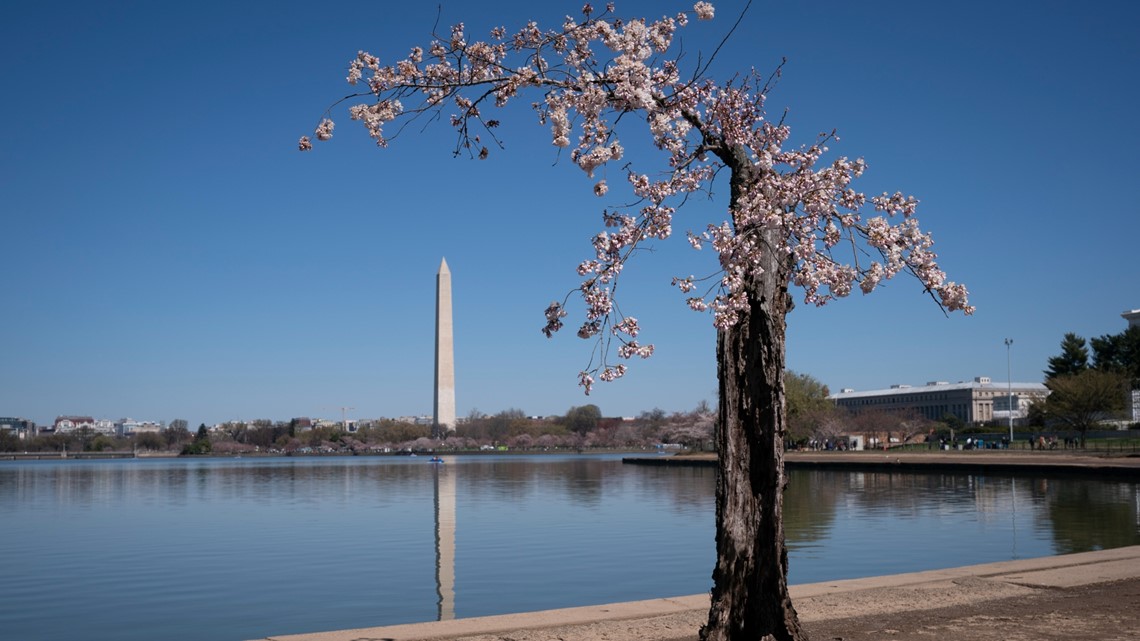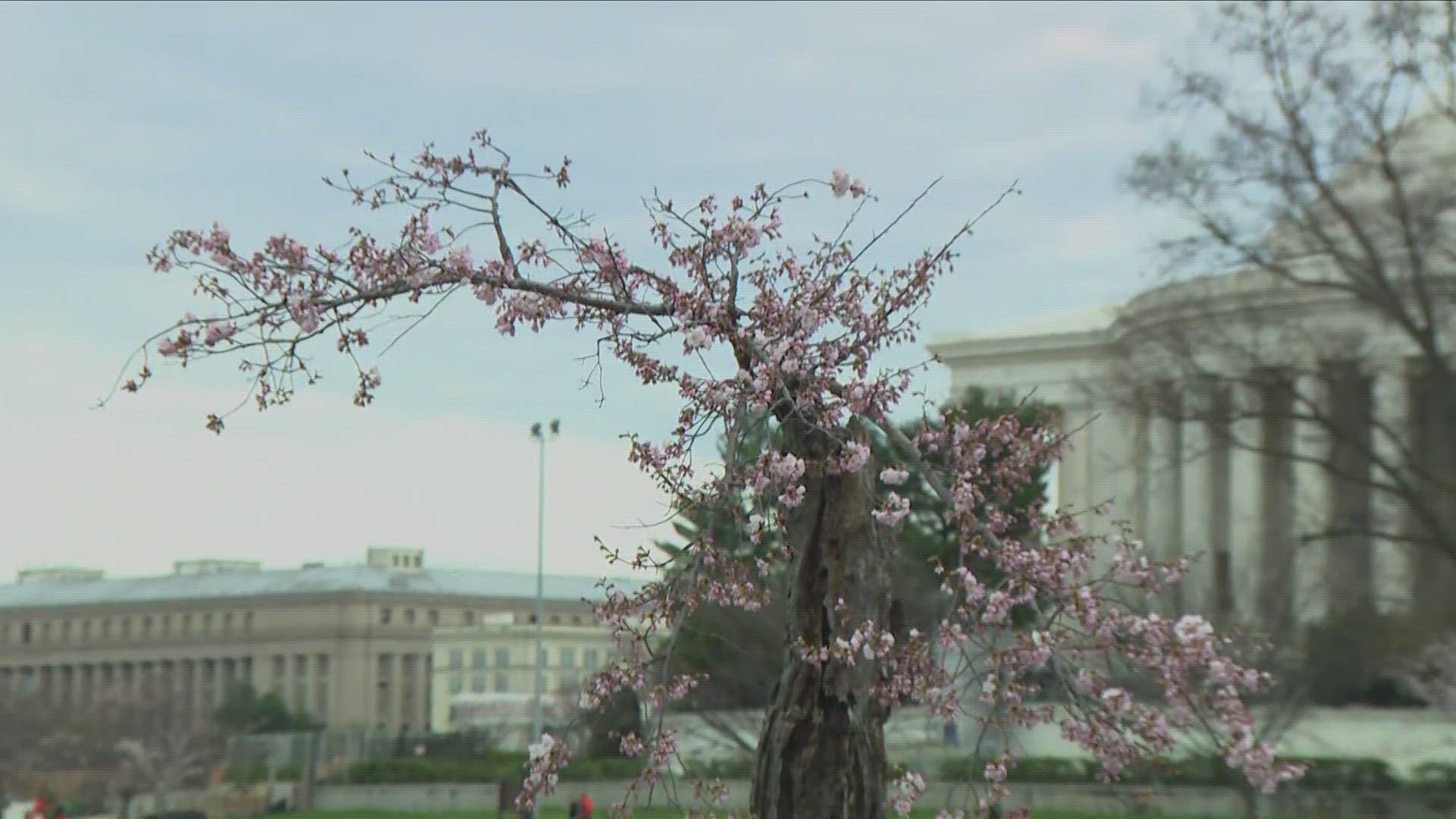WASHINGTON — Stumpy fans rejoice! The hollow-but-beloved cherry tree will be removed later this year as part of a project to rebuild the seawall at the Tidal Basin but, in a way, will live on thanks to a new plan from the National Park Service.
Later this spring, a $113 million project will begin to reconstruct the aging seawalls along the Tidal Basin and West Potomac Park. As part of the project, approximately 300 trees will need to be removed, including 140 of the Yoshino cherry trees around the Tidal Basin – Stumpy among them.
The National Park Service had been encouraging visitors to take advantage of their last opportunity to see Stumpy and the other trees before the project, which is expected to take several years to complete, begins. However, on Friday, Mike Litterst, spokesperson for the National Mall, told WUSA9 that Stumpy and the other cherry trees may not be completely down and out.
“We’ve got some efforts underway to keep them alive not only in spirit, but on the National Mall,” Litterst said. “Our friends at the National Arboretum are going to do some clippings of Stumpy. They’ll propagate some genetic matches – essentially clones – that we’ll be able to plant on the Tidal Basin once the work is done.”


Ultimately, Litterst said, all of the removed trees, including Stumpy, will be mulched. But even that is not the end of their story.
“That mulch comes back to the National Mall, it goes on the tree roots, gives them protection,” Litterst said. “The mulch breaks down and becomes soil and it will provide nourishment for trees for generations to come. So, there is a very beneficial second life for all of these trees even after we’ve had to take them down.”
On Friday, the National Park Service also announced the cherry blossoms had reached stage 5 – known as “puffy white” – of their development. The next and final step is peak bloom, which NPS has predicted could come between March 23 and March 26 this year. Last year, budding began earlier on Feb. 23 and peak bloom arrived on March 26.
Construction on the seawall project is expected to begin in late spring or early summer and take three years to complete. The project is meant to prevent damage to the park’s trees and monuments from rising sea levels for the next 100 years.
You can read more about the plans and timeline for the $113 million seawall reconstruction project here.
Do you have a news tip on this story or any other story? We want to hear from you. Tell us about it by emailing newstips@wusa9.com.
MORE WAYS TO GET WUSA9
DOWNLOAD THE WUSA9 APP
Apple App Store: WUSA9 News on Apple
Google Play Store: WUSA9 News on Android
HOW TO ADD THE FREE WUSA9+ APP TO YOUR STREAMING DEVICE
ROKU: add the channel from the ROKU store or by searching for WUSA9.
For both Apple TV and Fire TV, search for "WUSA9" to find the free app to add to your account. Another option for Fire TV is to have the app delivered directly to your Fire TV through Amazon.
SIGN UP TO RECEIVE WUSA9 NEWSLETTER
Subscribe to our daily WUSA9 Newsletter for top stories from WUSA9 curated daily just for you. Get content and information right now for can’t-miss stories, Commanders content, weather, and more delivered right to your inbox.

